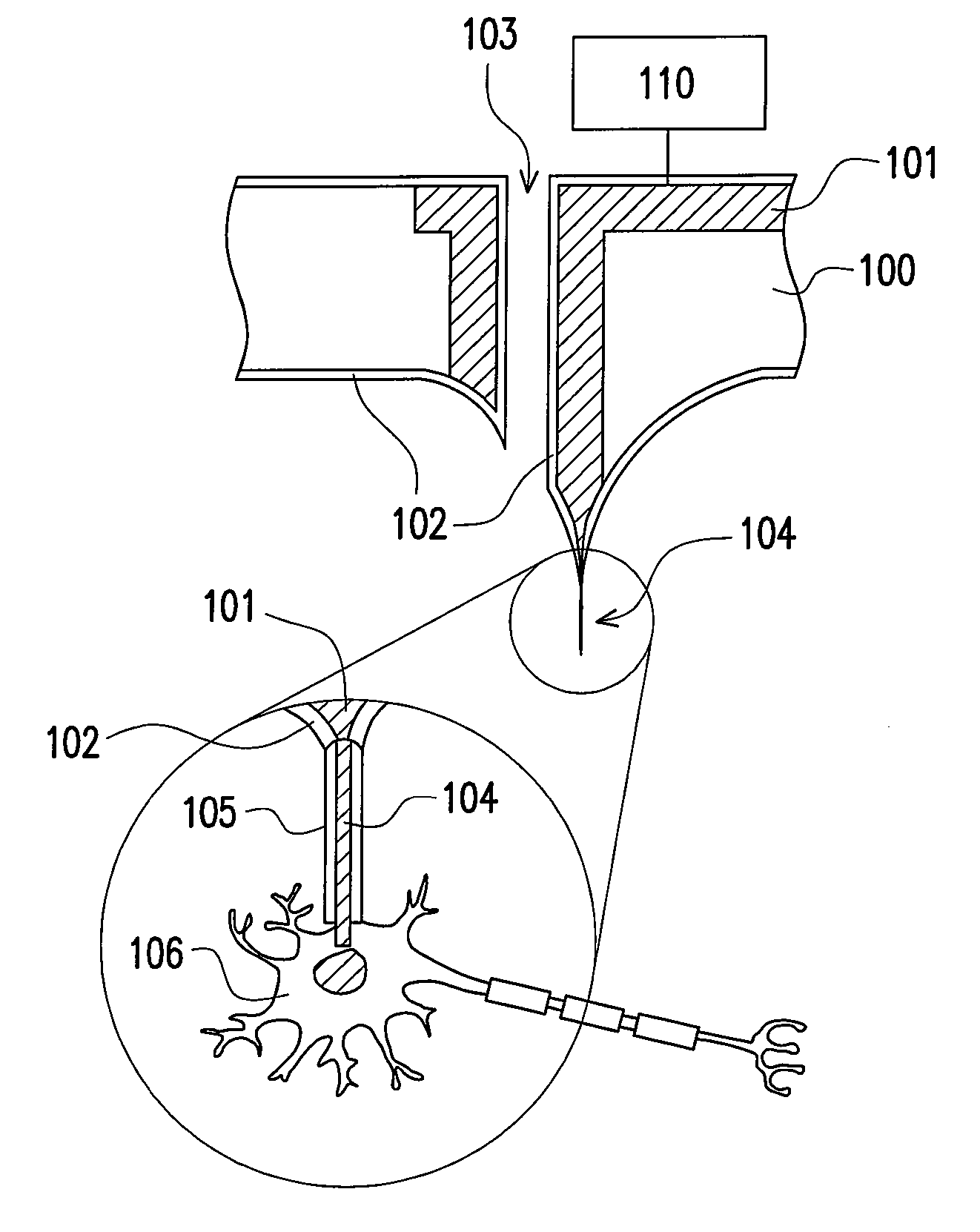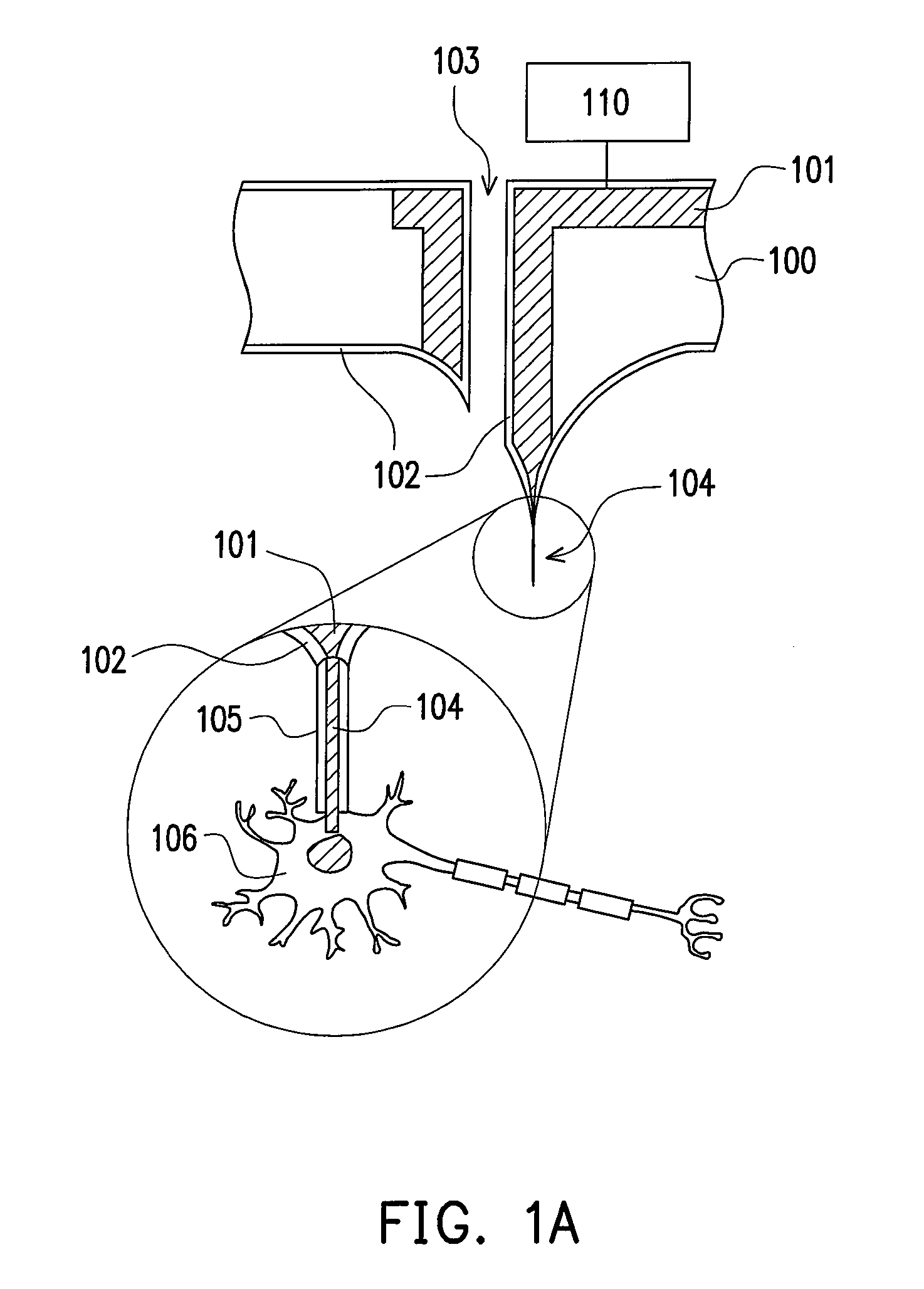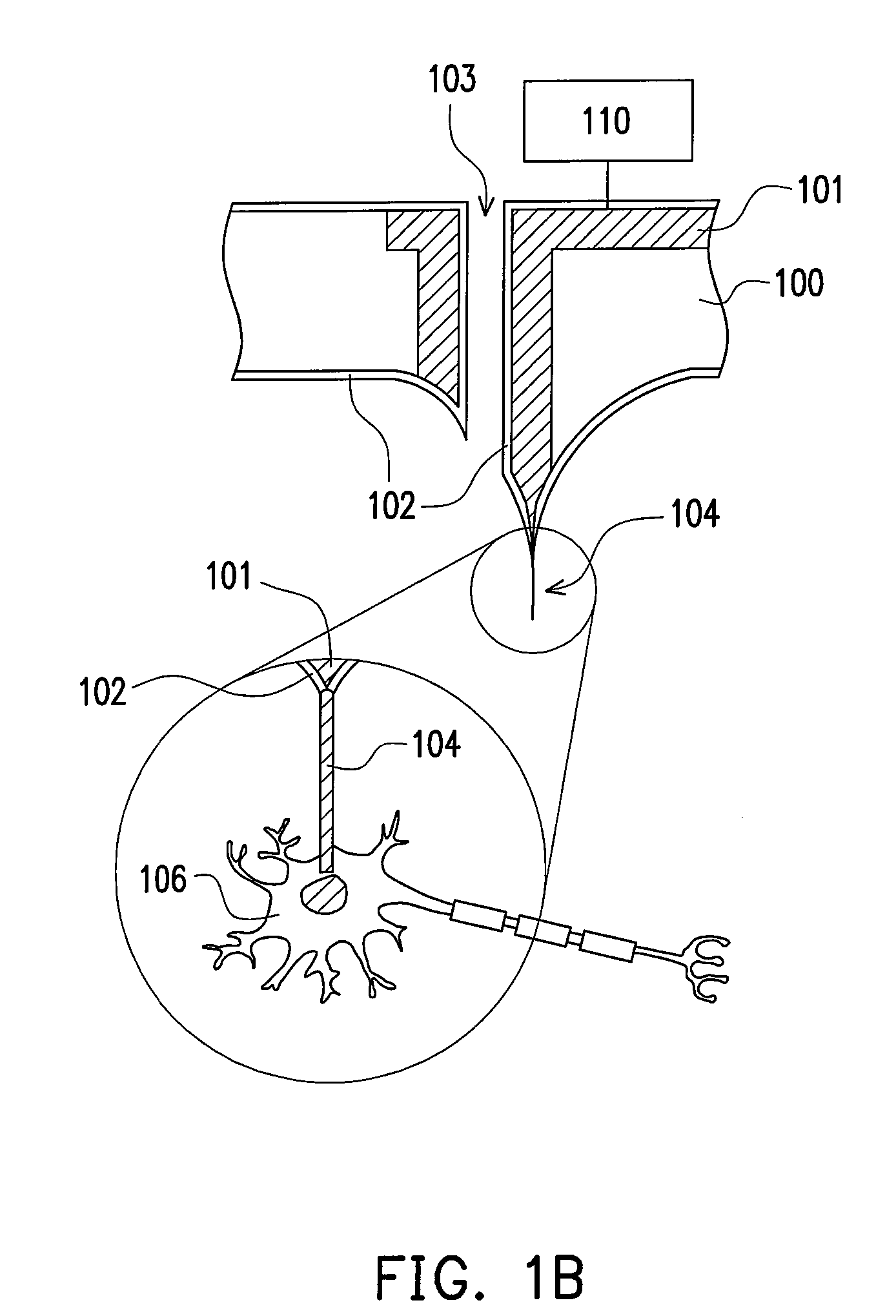Multifunctional nano-probe interface structure for neural prostheses and manufacturing method thereof
a nano-probe and interface structure technology, applied in the field of multi-functional nano-probe interface structure and a manufacturing method thereof, can solve the problems of output current and detection sensitivity reduction, and achieve the effect of accurately and regionally stimulating a single, less damage to the neural cell, and less damag
- Summary
- Abstract
- Description
- Claims
- Application Information
AI Technical Summary
Benefits of technology
Problems solved by technology
Method used
Image
Examples
Embodiment Construction
[0039]FIG. 1A is a schematic cross-sectional views of several nano-probe interface structures according to an embodiment of the present invention.
[0040]Referring to FIG. 1A, the nano-probe interface structure according to this embodiment at least includes a micro-electrode substrate array 100, a carbon nanotube 104, and a controller IC 110 for neural cell recording and stimulation. The carbon nanotube 104 is disposed on the micro-electrode substrate array 100. Though only one carbon nanotube is shown in FIG. 1A, in fact, the carbon nanotube 104 herein can be a single-wall carbon nanotube, a double-wall carbon nanotube, a multi-wall carbon nanotube, a carbon nanotube bundle, a single, multiple, or carbon nanotube matrix. The diameter of the carbon nanotube 104 is, for example, from 1 nm to 100 nm, and preferably from 1 nm to 50 nm. The controller IC 110 for neural cell recording and stimulation is externally connected to the micro-electrode array 100, and the controller IC 110 is the...
PUM
 Login to View More
Login to View More Abstract
Description
Claims
Application Information
 Login to View More
Login to View More - R&D
- Intellectual Property
- Life Sciences
- Materials
- Tech Scout
- Unparalleled Data Quality
- Higher Quality Content
- 60% Fewer Hallucinations
Browse by: Latest US Patents, China's latest patents, Technical Efficacy Thesaurus, Application Domain, Technology Topic, Popular Technical Reports.
© 2025 PatSnap. All rights reserved.Legal|Privacy policy|Modern Slavery Act Transparency Statement|Sitemap|About US| Contact US: help@patsnap.com



